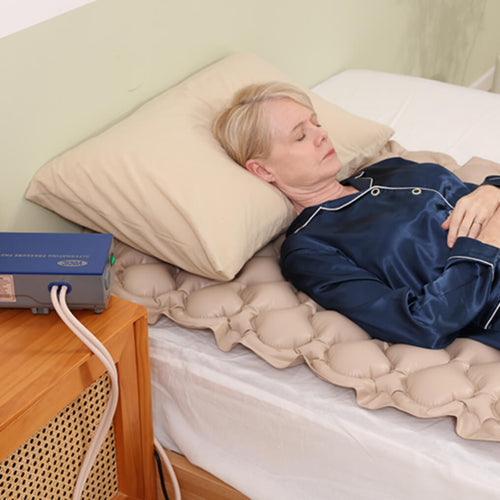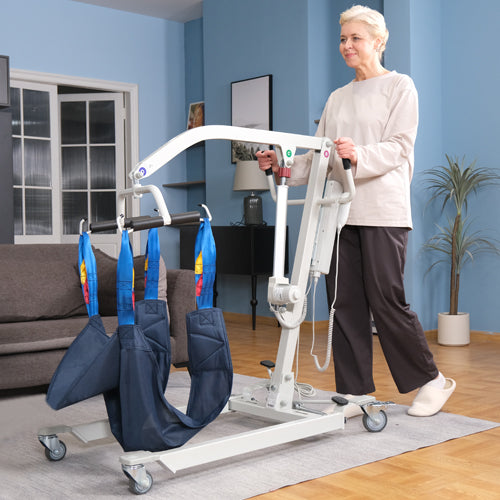The reason why selecting a walker or a cane is not merely the question of mobility; it is the issue of safety and independence, as well as quality of life. This guide will break down the practical variations so that you can come up with the choice of which tool works best with you.
It might be post-operative recovery, balance problems or simply the wish to move more conveniently, but the choice to use a walker vs a cane is based on the identification of key differences between the two, and this fact will enable you to make a decision on the aid.
Why Choosing the Right Mobility Aid Matters
The right mobility aid reduces the risk of falls, consumes less power, and improves dignity. The wrongly selected device may enhance the stress, decrease activity, and increase the risk of accidents. The healthcare experts consider balance, leg strength, endurance, and the environment where a person lives when making a recommendation of a device. The idea is to align support to functionality to ensure that the users are kept active and have confidence.
There are various forms of mobility aids meeting different levels of support needs, like walkers, canes, rollators (wheeled walkers), crutches, wheelchairs and power chairs. Among them, the most common types are walkers and canes. Let’s see their differences and who they are suitable for.
Walker vs Cane: What Are the Differences
There are some differences between a walker and a cane, such as the structure and design, stability and support, and others, which can be seen in detail as follows:
Structure and Design
A single support pole is referred to as a cane; other canes have quad bases to increase stability. Walkers are framed aids, two or four-legged or four-wheeled (rollators) devices. Walkers spread weight on a broader foundation and are frequently equipped with seats, storage pockets, and brakes.
Stability and Support
Walkers provide good lateral and forward stability, which occurs when legs are weak or balance is severely defective. Canes offer the least support, and they are suitable in cases where one side of the body is weaker or where balance problems are mild.

Weight, Portability, and Ease of Use
Canes are portable and extremely light; one can carry them in a handbag, or may hang them on the chairs. Walkers are not light and most of them can be folded into a storage or car trunk. The rollators (wheeled walkers) are easier to move about and push, but need handbrake control.
Suitable Health Conditions for Cane or Walker
Use a cane depending on a minimum of balance problems, or the slight weakness in the legs, or the necessity to give some extra support on one side. Use walkers when you experience severe balance impairment, weakness on both sides, post-surgical recovery, or fatigue and cannot move continuously because of these complications.
Comparison Chart
|
Feature |
Cane |
Standard Walker / Rollator |
|
Stability |
Low-Medium |
High |
|
Weight capacity |
~200-300 lbs. (varies by model) |
250-300+ lbs. (many models) |
|
Portability |
Excellent |
Moderate (folding models available) |
|
Best for |
Mild balance issues, single-leg weakness |
Bilateral weakness, poor balance, long walks with rest |
|
Seat option |
Rare |
Common (rollators have seats) |
|
Recommended when |
You can bear most weight on both legs |
You need frequent rest or broad support |
How to Choose the Walker or Cane for Your Mobility Needs
Start an honest examination: will you be able to stand and take up weight on both legs properly? A cane could suffice in case of yes, and balance problems are minor. A walker or rollator will likely be preferable in case you get tired easily, need support in your hand, or cover longer distances on foot.
Two modern options worth considering:
VOCIC Z55 2-in-1 Foldable Walker & Transport Wheelchair Combocan easily transform into a rollator walker or a transport chair with the swift flip of the backrest. It has all-terrain 10-inch wheels, a robust aluminum frame, and is capable of carrying up to 300 lbs., which makes it ideal not only inside the house but also outside.
The VOCIC Z63 Rollator Walker with Big Rubber Wheelshas a 3-level adjustable damping solution to provide downhill safety, EM-damped rubber tires to reduce slips, and a pressure-relieving seat to make the roller acceptable for taking long walks or rehabilitation sessions. It is an excellent option among active users who care about its safety and smoothness of handling.
The two models are meant to be a balance between comfort and performance: the Z55 is oriented to those who need a means to transport lots of things within convertible modes, whereas the Z63 is aimed at prolonged effort and walking in advanced damping and high-end wheels.
Tips for Using a Cane or a Walker Safely
Here are some essential tips to help you use a cane or a walker safely and comfortably:
Get a measurement-accurate fit: Handles must be on the wrist when one is standing straight.
Practice the right gait: Hold the cane and the weaker leg forward at the same time; with a walker, you need to move forward into the walker, but not push it too far forward.
Use accessories: Canes with safety cane tips, light and reflective bags are also useful.
Maintain equipment: check the brakes, treads on the wheels, and handle grips regularly.
Consult a therapist: A physical therapist will verify your equipment, instruct you in gait patterns, and structure exercises that can advance strength.

Conclusion
You have to consider that there is no universal solution to the question of walker vs cane; it is merely the one that fits your body and your way of life. A cane is used when mild balance is required and the activity of everyday walking would help; a walker or rollator is used when more comprehensive assistance, seating, and increased endurance are necessary when taking longer walks.
In case of versatility, the VOCIC Z55 convertible walker-chair is an all-purpose solution. The VOCIC Z63 is highly dampened and comfortable when you intend to spend time outdoors or require a rollator that absorbs the bumps and slopes. Use the gadget that will make you move safely; that is what mobility assistance is all about.
FAQ
When should I switch from a walker to a cane?
Change when you are stable both in your balance and leg strength, such that you can safely stand without full-frame aids, and your therapist is convinced that you can manage single-point support.
What is the best device to assist walking?
The most appropriate model would be based on the requirement: a walker would provide the highest stability; a cane would be portable; a rollator, such as VOCIC Z63, would be most versatile and helpful during rest with its built-in seat, and a rolled walker offers the advantage of mobility with a lightweight design and additional support, making it a good option for those who need a balance of stability and ease of movement.
Which leg goes first when using a cane?
Prefer to walk with the more powerful leg at the initial step and then follow with the less powerful leg and the cane in one union.
Is a rollator better than a cane?
A rollator can be used by persons who require greater assistance, a seat, and easier long-range movement. Cane will be more convenient in terms of lightness, speedy support, and travelling.









